Automations in monday.com are a huge time-saver. They help you move items, update statuses, send reminders, and much more. But when you’re working on a board with dozens, or even hundreds, of automations and integrations, it can get overwhelming fast.
The good news is that monday has added a new feature that makes it easy to download all your automations and integrations into an Excel file.
Watch my tutorial on this topic below:
3 Built-in Ways to Keep Automations Organized
Before we get into downloading your automations, let’s look at a few simple tricks you can use to stay organized right inside monday.com.
1. Use Descriptions
Every automation lets you add a description, which is a useful feature. Just write a short note about what the automation item does. For example, “Mirror item to main board” or “Alert team when status changes.”
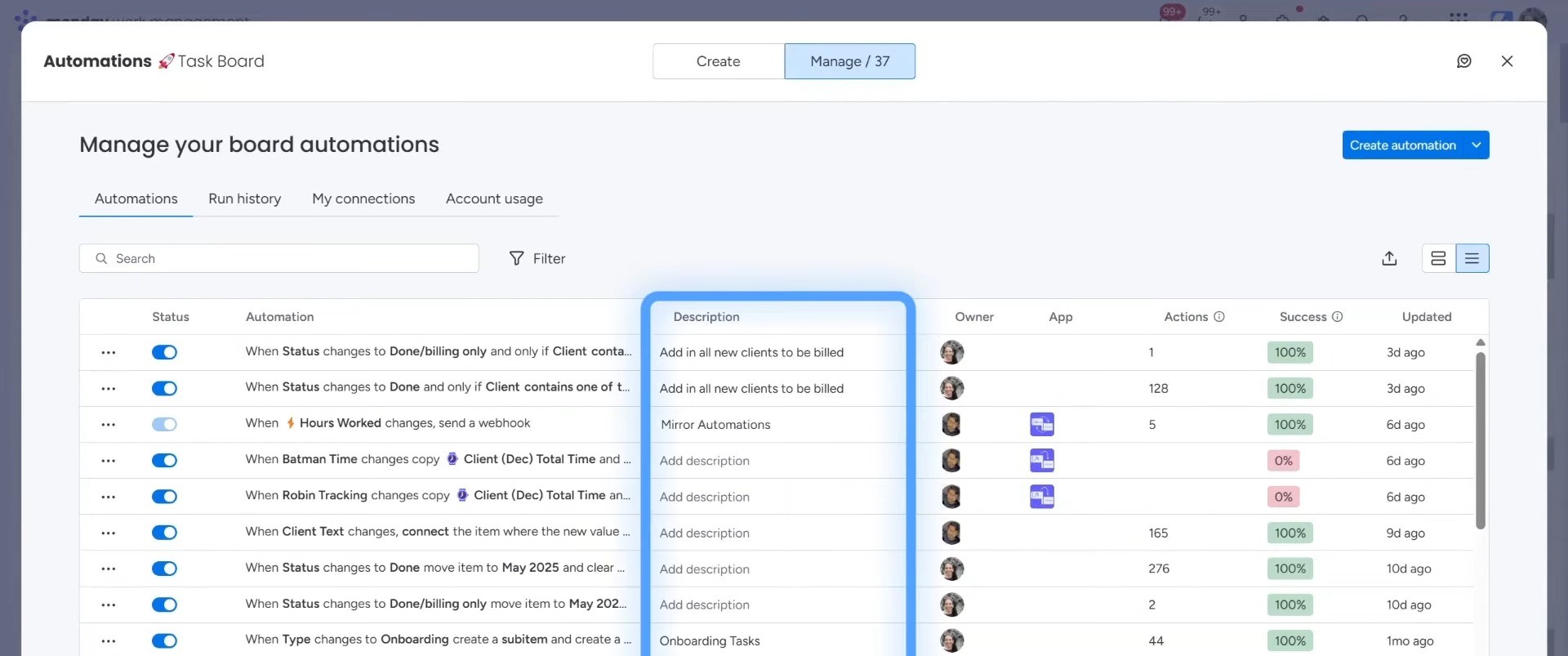
Want to make it even easier? Add emojis to your descriptions. They help you spot categories at a glance.
2. Switch to Compact View
There are two layout options when viewing automations: classic and compact. The classic view is bigger and shows more spacing, but it can feel cluttered if you have a lot of items.
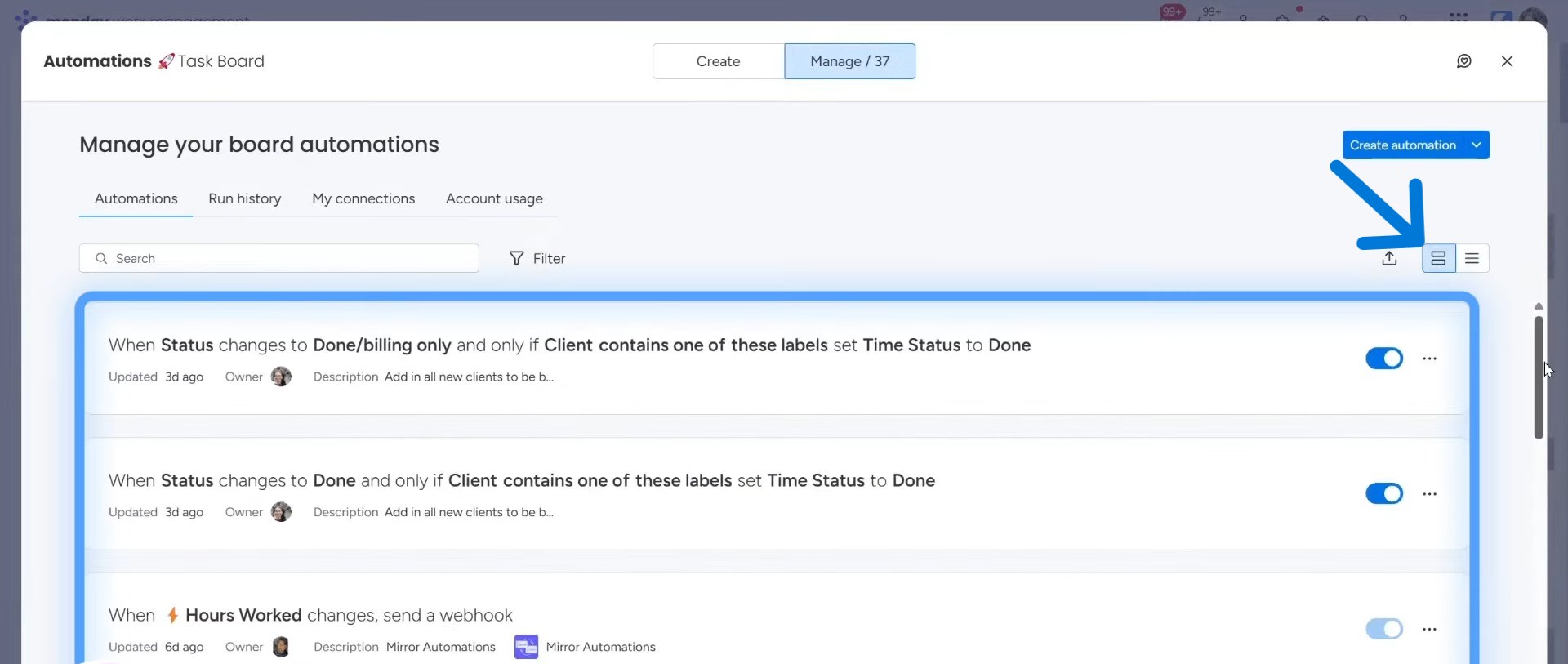
I recommend switching to the compact view. It fits more automations on your screen at once, which makes it easier to scan through them quickly. You can still see all the important info, like descriptions and triggers, in this option.
3. Filter Automations
Another helpful trick is to use the filter option. You can filter automations by:
- Owner
- Trigger
- App
- Status
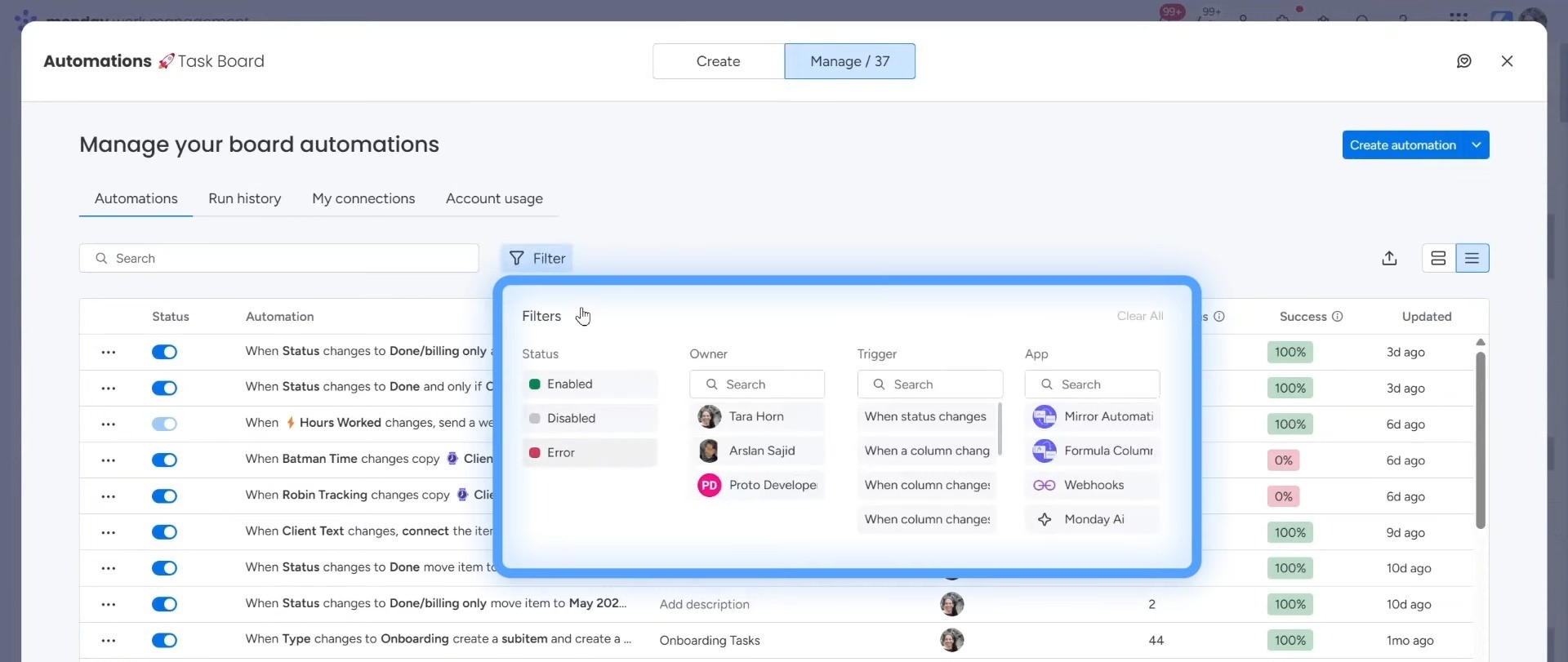
This helps when you’re trying to find automations related to a specific workflow or teammate. For example, if you want to see only the automations assigned to you, just filter by owner.
Exporting Automations to Excel
Let’s look at the new feature that lets you export all your automations and integrations into an Excel file. This is really useful if you’re managing multiple boards or teams.
Here’s how to do it:
- In the top-right corner of the automations screen, look for the “Export to Excel” button.
- Click it and a file will be created and then downloaded automatically.
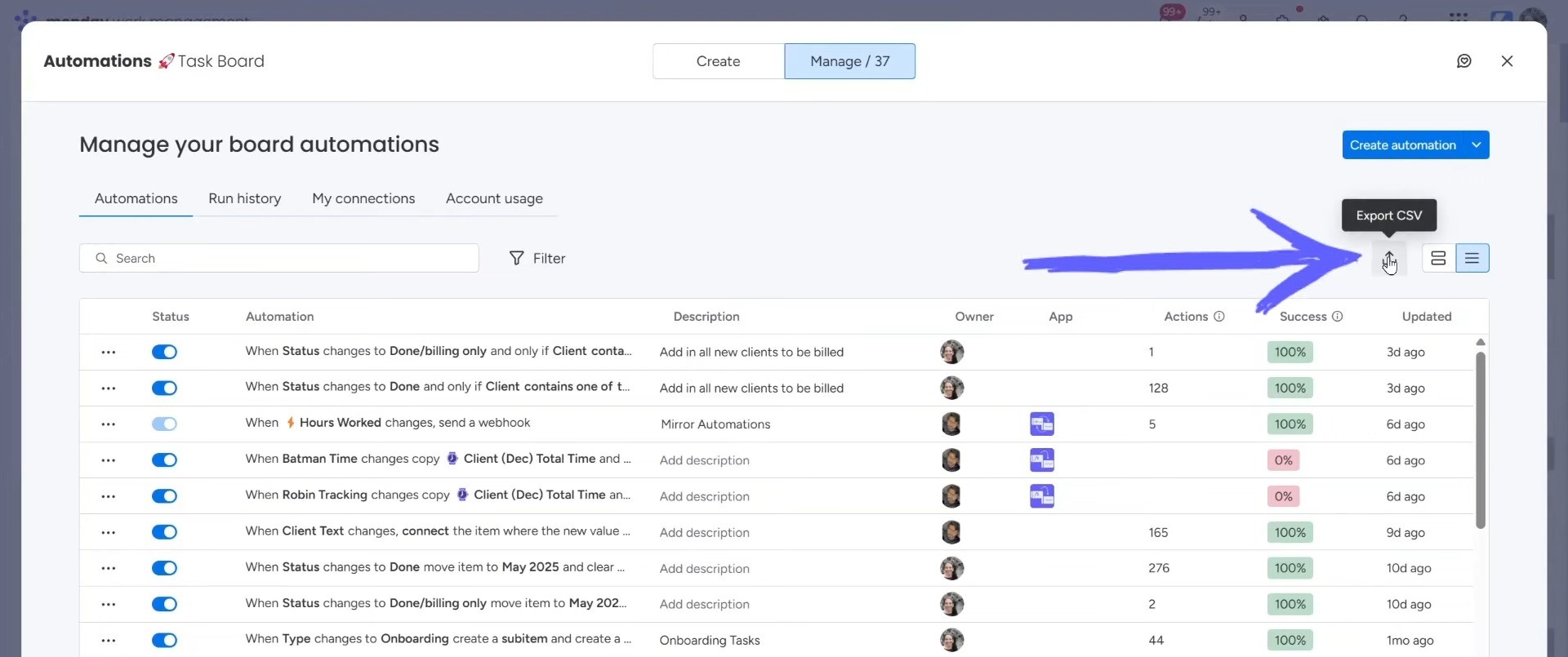
Inside the Excel file, you’ll see a full list of your automations with important details. Here’s what you’ll get:
- Automation ID: A unique number for each automation.
- Sentence: It’s a description of what the automation does.
- Description: If you added one in monday.com, it will show up here.
- App Name: If the automation uses a third-party app, the name will be listed.
- Owner: The person who created or owns the automation.
- State: Shows if it’s active or inactive.
- Last Updated: The last time the automation was changed.
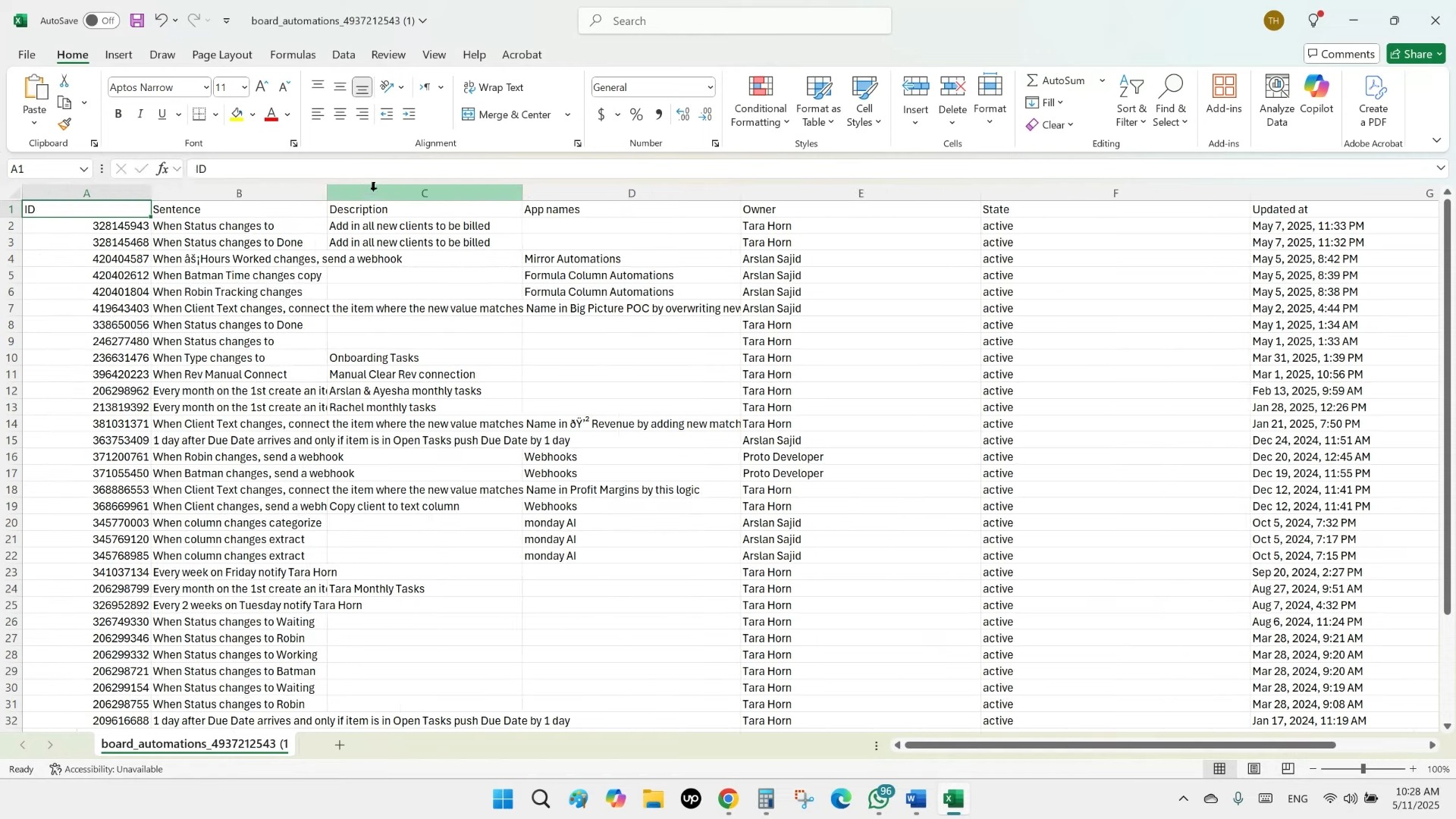
The Excel file gives you a clear picture of everything running behind the scenes. You can also copy this data into a separate sheet to track changes over time, flag outdated automations, or build your own dashboard.
Need help organizing your monday.com automations? Simpleday can set up, streamline, and optimize your workflows. Contact us for a customized solution.


